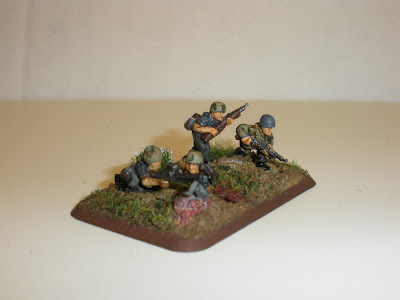I was one of the first painters to show up, fill-in the registration card, and hand my entries over. I submitted a Panzer IV to the Tank Team category, Fallshirmjager Panzerschreck to the Infantry Team, a Fallshirmjager Platoon to the Platoon, and finally my Nebelwerfers to the Gun Team category.
Since I was the first to have models placed in the viewing cabinet, throughout the day, I watched the entries being added and began to realize how stiff the competition was going to be. I decided to write off the contest as a learning experience and preparation for next year.
Then, to my complete shock, during the award ceremony, my name was called for 3rd place in the Gun Team category!
Thanks to the folks at Battlefront for putting on a great competition! I'm already thinking about next year's entries. Once I see a final list of all the winners, I'll post it here with a link to Battlefront's webpage, so you can see all the awesome models.






















































